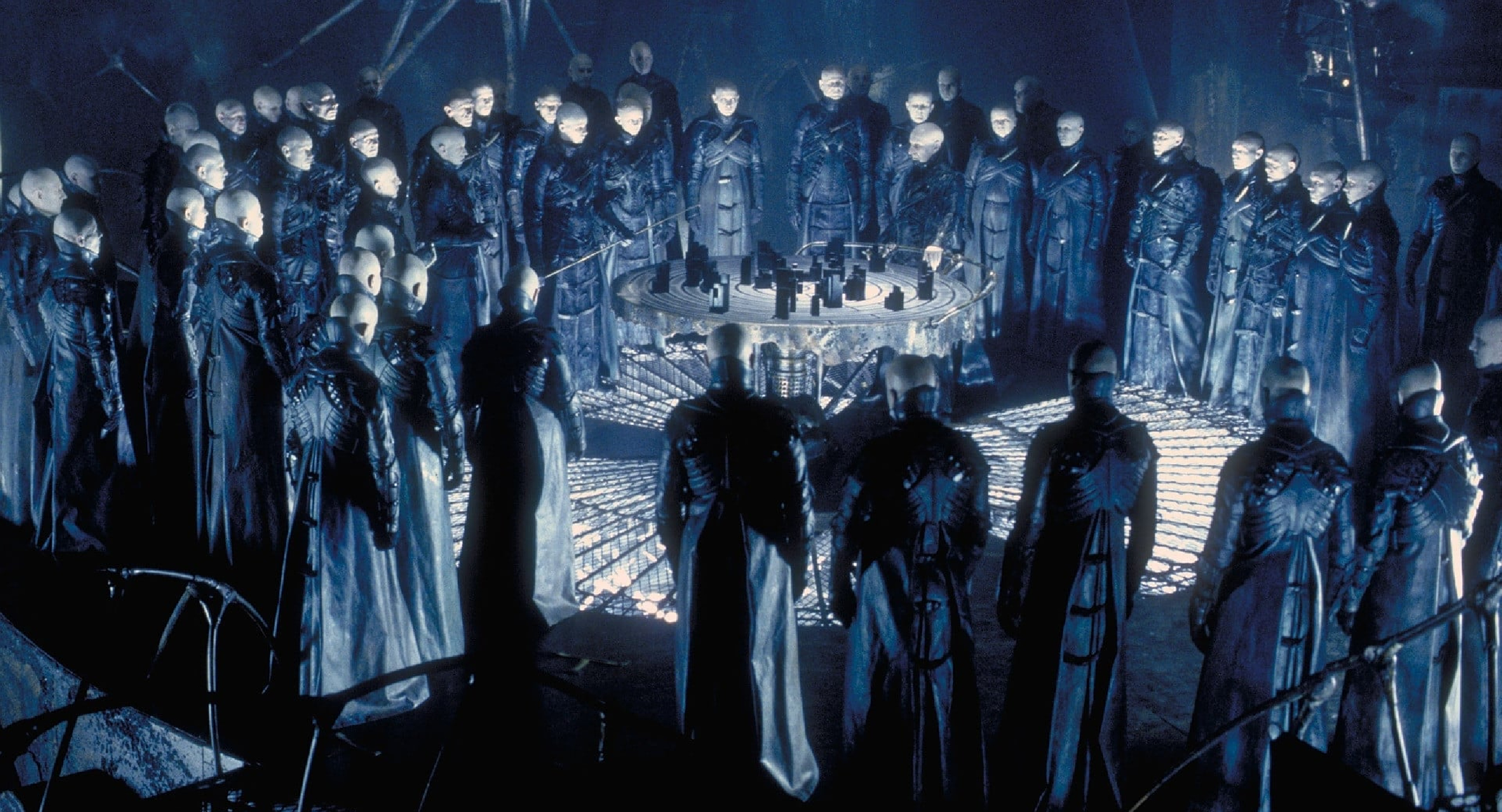Dark City – Film Review
Published September 26, 2023

Dark City is a cinematic gem that delves deep into the realms of science fiction and noir, leaving audiences spellbound with its unique narrative, visually stunning set design, and thought-provoking themes. Released in 1998 and directed by Alex Proyas, this film has garnered a cult following over the years and continues to captivate viewers with its enigmatic storyline and dark, atmospheric visuals.
One of the standout aspects of Dark City is its ability to seamlessly blend various genres, creating a cinematic experience that is both familiar and completely original. At its core, it is a neo-noir thriller with a dash of science fiction, but it also draws inspiration from classic film noir and German expressionism. This fusion of genres results in a film that is not only visually striking but also intellectually stimulating.
The film’s narrative is a labyrinthine puzzle that slowly unravels, inviting viewers to piece together the mystery along with the characters. The story follows John Murdoch (played by Rufus Sewell), a man who wakes up in a hotel room with no memory of who he is or how he got there, only to discover that he is wanted for a series of brutal murders. As he searches for answers, he becomes entangled in a conspiracy that involves a group of mysterious beings known as “The Strangers,” led by Mr. Hand (played with eerie perfection by Richard O’Brien). These otherworldly entities possess the ability to manipulate reality, altering the city and its inhabitants at will.
The central theme of reality and identity is a recurring motif in Dark City. As John Murdoch grapples with his lost memories and questions his own existence, the film challenges viewers to contemplate the nature of reality itself. The city in which the story unfolds is a surreal, perpetually dark metropolis with a constantly shifting skyline, where time seems to stand still. This ever-changing environment is both mesmerizing and unsettling, serving as a metaphor for the malleability of reality and the fragility of human perception.
The film’s visual aesthetic is nothing short of breathtaking. The dark and foreboding cityscape, designed by production designer Patrick Tatopoulos, is a character in its own right. Its towering, gothic architecture, perpetually shrouded in darkness, creates an atmosphere of perpetual nightmarishness. The city’s inhabitants dress in a timeless, noir-inspired fashion, adding to the film’s sense of anachronism and disorientation.
The use of light and shadow in Dark City is particularly noteworthy. Cinematographer Dariusz Wolski employs chiaroscuro lighting techniques reminiscent of classic film noir, casting characters’ faces in deep shadows and creating a sense of unease and mystery. These visual elements not only serve the film’s narrative but also pay homage to the noir genre, which heavily influenced Dark City‘s style.
Rufus Sewell’s portrayal of John Murdoch is a standout performance in the film. He captures the character’s confusion, desperation, and determination with remarkable depth. As viewers follow Murdoch’s journey to uncover the truth about himself and the city, Sewell’s performance keeps them emotionally invested in the story.
Equally impressive is Kiefer Sutherland‘s role as Dr. Schreber, a mysterious scientist with a connection to The Strangers. Sutherland delivers a subdued and haunting performance that adds an air of ambiguity to his character. Jennifer Connelly, who plays Emma, Murdoch’s estranged wife, brings emotional depth and vulnerability to her role, providing a counterbalance to the film’s dark and enigmatic elements.
The Strangers, led by Richard O’Brien’s Mr. Hand, are a truly chilling and memorable group of antagonists. Their pale, bald appearances and emotionless demeanor make them appear otherworldly, while their powers of reality manipulation give them an almost omnipotent quality. O’Brien’s portrayal of Mr. Hand is particularly eerie, as he exudes a quiet malevolence that sends shivers down the audience’s spine.
The film’s soundtrack, composed by Trevor Jones, complements the visuals and narrative perfectly. It features a hauntingly beautiful score that enhances the film’s sense of foreboding and wonder. The music serves as an auditory backdrop to the ever-shifting cityscape and the characters’ emotional journeys, adding another layer to the film’s immersive experience.
Dark City is not without its flaws, though. Some viewers may find the complex narrative and philosophical themes challenging to grasp on a first viewing. The film’s deliberate pacing, while essential to building tension and atmosphere, may also test the patience of those seeking a more action-oriented experience. However, for those willing to invest their time and attention, Dark City rewards with a rich and thought-provoking narrative.
Dark City is a cinematic gem that continues to shine brightly in the realm of science fiction and neo-noir cinema. Its intricate narrative, mesmerizing visuals, and thought-provoking themes make it a film that lingers in the mind long after the credits roll. While it may not be a mainstream blockbuster, it has earned its place as a cult classic and a must-see for fans of intelligent and visually striking cinema. Alex Proyas, along with his talented cast and crew, has crafted a film that challenges our perceptions of reality and identity, leaving us questioning the very nature of the world we inhabit. Dark City is a dark, enigmatic, and utterly captivating experience that deserves a place in the pantheon of great science fiction films.
